Common flowers that start with the letter S include Sand Phlox, Scarlet Rose Mallow, Scarlet Sage, Scotts Clematis, Sea Thrift, Serbian Bellflower, Shooting Star Flower, Showy Stonecrop, Shrub Rose, Siberian Iris, Small Globe Thistle, and Snow-In-Summer.
The world of flowers is an amazing place, and there’s so much beauty to behold when you really look at the amazing plant life that occupies our world. In fact, you can pick any letter, look up flowers that start with that particular letter, and be stunned at the beauty you’ll find.
Today, we cover gorgeous flowers that start with S and learn interesting facts about each.
1. Sand Phlox (Phlox bifida)

The Sand Phlohlox is typically found in the central United States.
©iStock.com/Kristyna Sindelkova
Commonly referred to as the sand phlox, the scientific name is Phlox bifida. This small but beautiful flower typically only grows to about 6 inches tall, and it spreads across prairies by self-seeding. This is a strong species that’s known for being resilient against root rot. It’s typically used in rock gardens or as part of a perennial border. The flower does well in part sun and part shade. You’ll typically find the sand phlox in the central United States.
2. Scarlet Rose Mallow (Hibiscus coccineus)
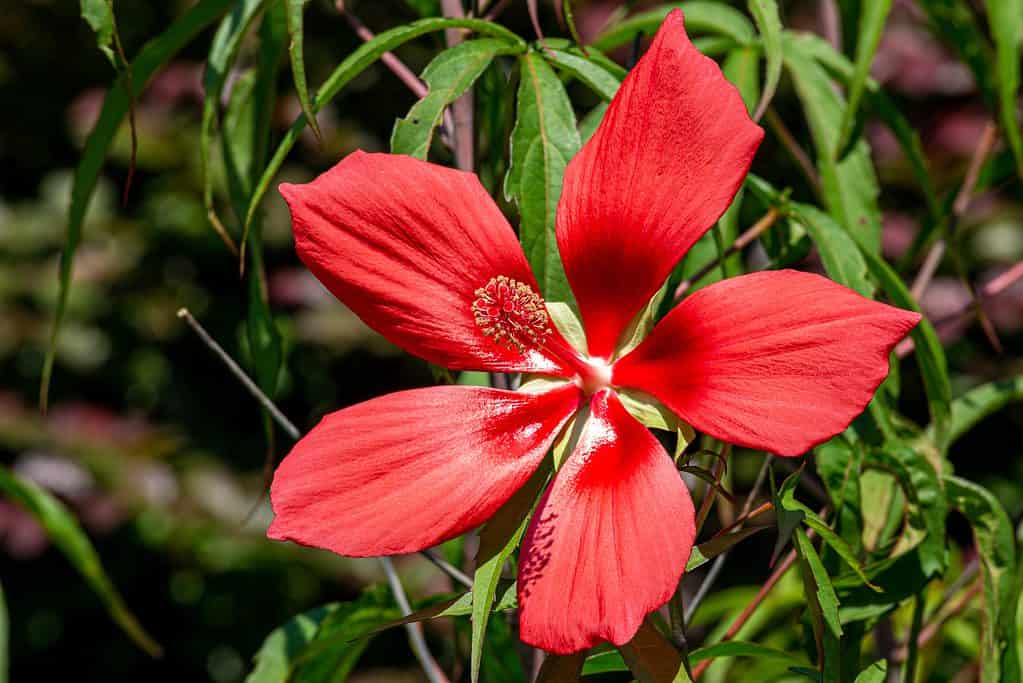
This stunning flower is often found in swamps and marshes.
©billysfam/Shutterstock.com
The second entry on our list is the gorgeous but understated scarlet rose mallow. This perennial is simple in its appearance; however, it can grow to up to 10 feet tall, and it’s rather impressive. This flower has a vibrant red shade that really pops, and they can grow to 6 inches in width. The rose mallow is mostly found in the southern states, where it typically grows it in swamps and marshes.
3. Scarlet Sage (Salvia splendens)
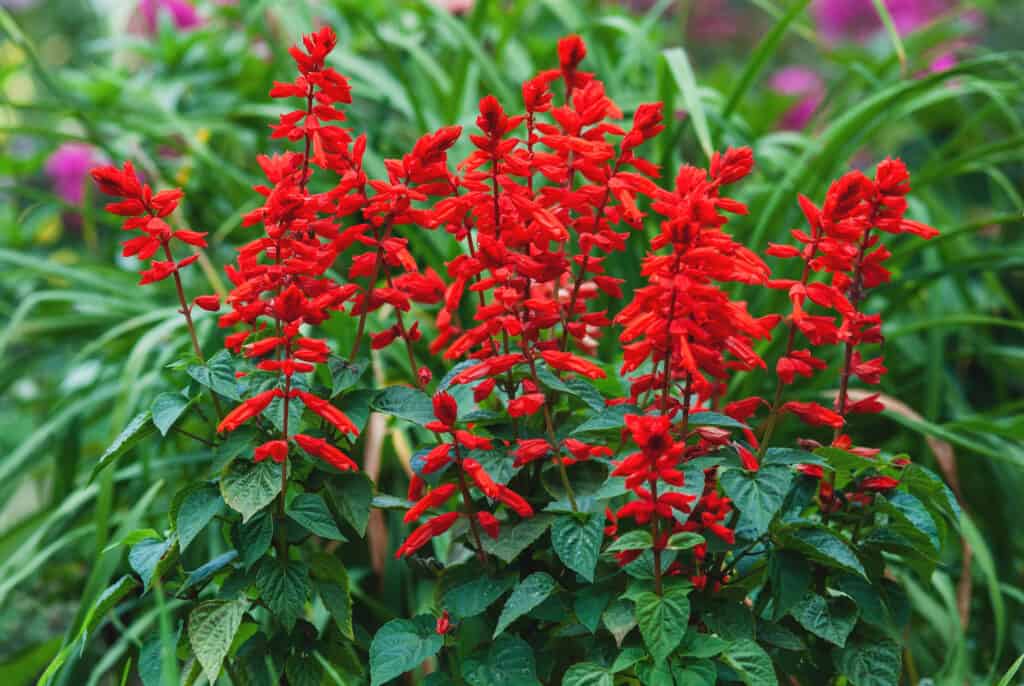
Scarlet sage is native to Brazil and is quite gorgeous.
©iStock.com/Nadya So
Another red flower is the scarlet sage, which also has a bright red color that’s hard to miss. However, in this case, the flower is more elevated than spread out. It grows in clumps that can reach up to 12-18 inches tall and 12 inches wide, creating a gorgeous display. This beautiful Brazil-native is easy to grow and typically disease and pest-free.
4. Scotts Clematis (Clematis scottii)
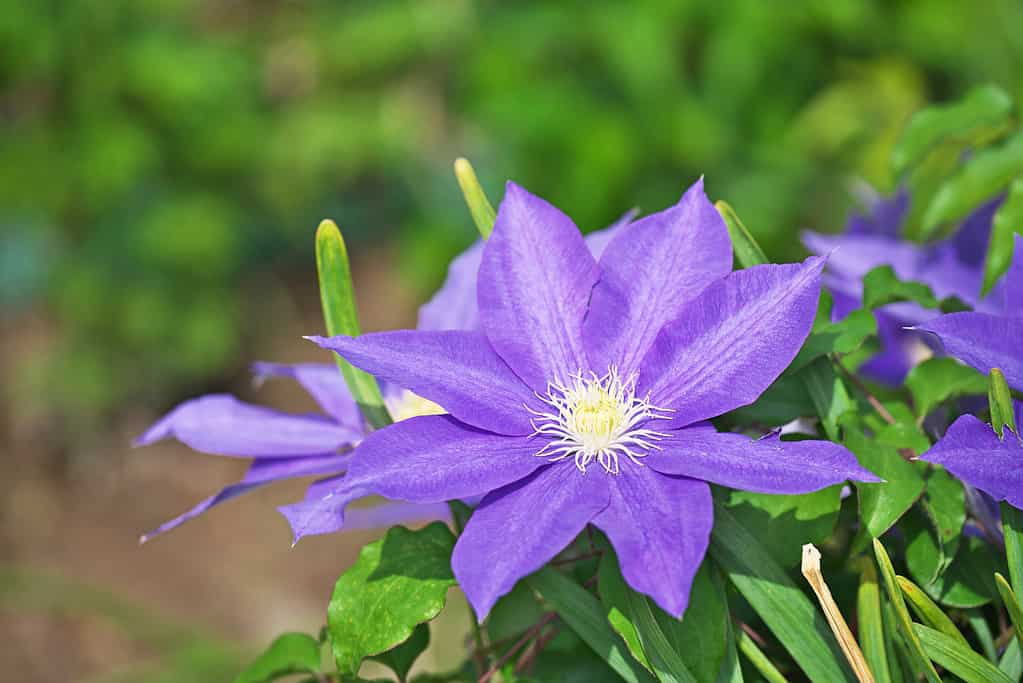
The scotts clematis grows to about two feet tall.
©iStock.com/igaguri_1
This wonderful flower is native to the great plains states, and it can grow up to 1 foot tall and almost 2 feet wide. It grows best in fertile and rich soil, and it does well in either full sun or part shade. Scotts clematis looks best when planted in large groups, and they always look lovely in rock gardens, meadows, and prairies.
5. Sea Thrift (Armeria maritima)
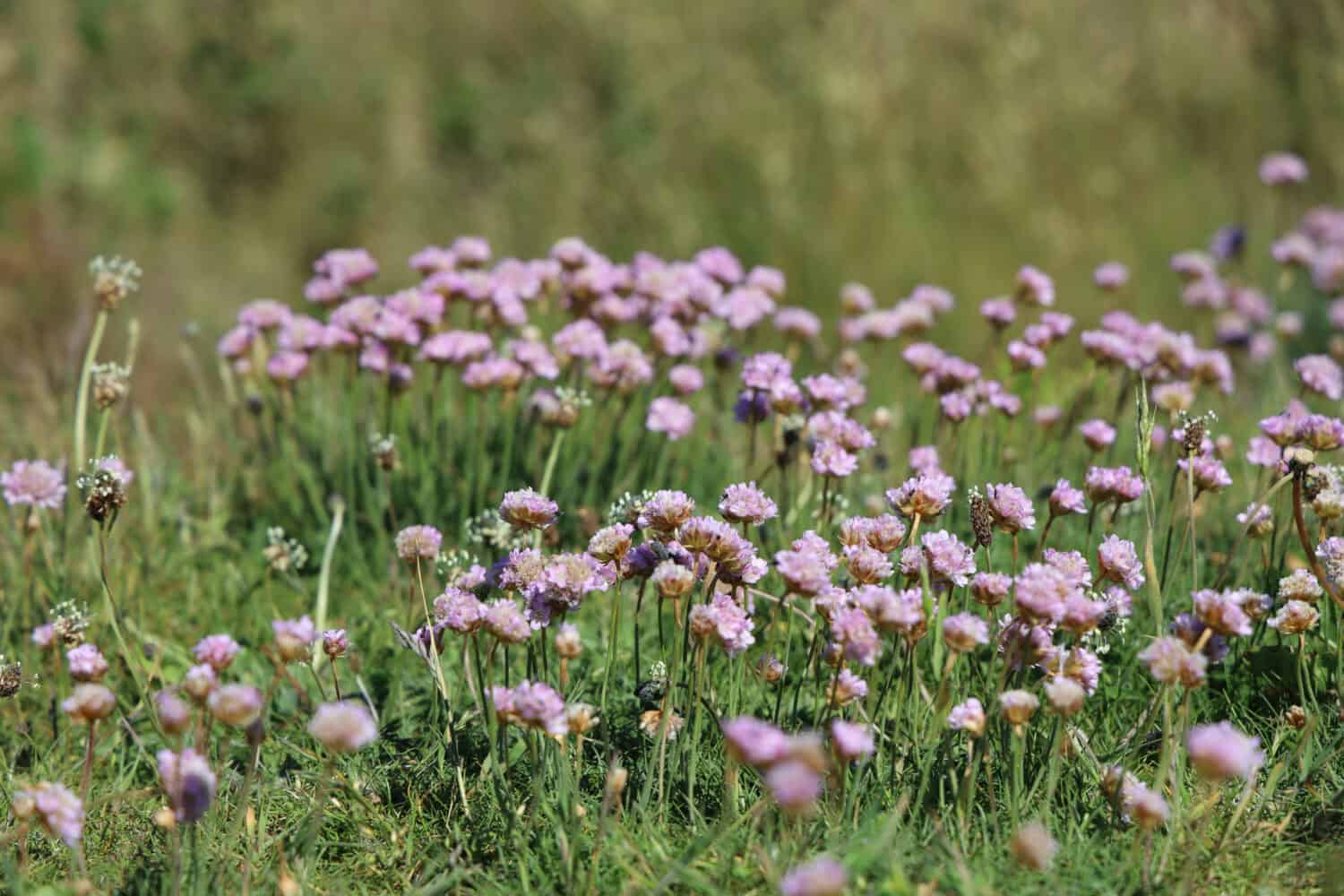
Sea thrift flowers look great in fields or rock gardens.
©Oakland Images/Shutterstock.com
Travel to the mountains of Europe or visit Northern California, and you have a good chance of seeing the dainty sea thrift, an herbaceous perennial typically found in coastal environments. It’s a more compact species, often growing only to 6 to 12 inches in height. Each of the flowers comes with five petals that are joined at the base, and the final result is quite stunning. The flower grows best in full sun, and it requires well-drained soil. Sea thrift looks great in rock gardens or around the edge of perennial borders. Plant in spring or fall, and soon you’ll have these gorgeous blooms in your garden.
6. Serbian Bellflower (Campanula poscharskyana)
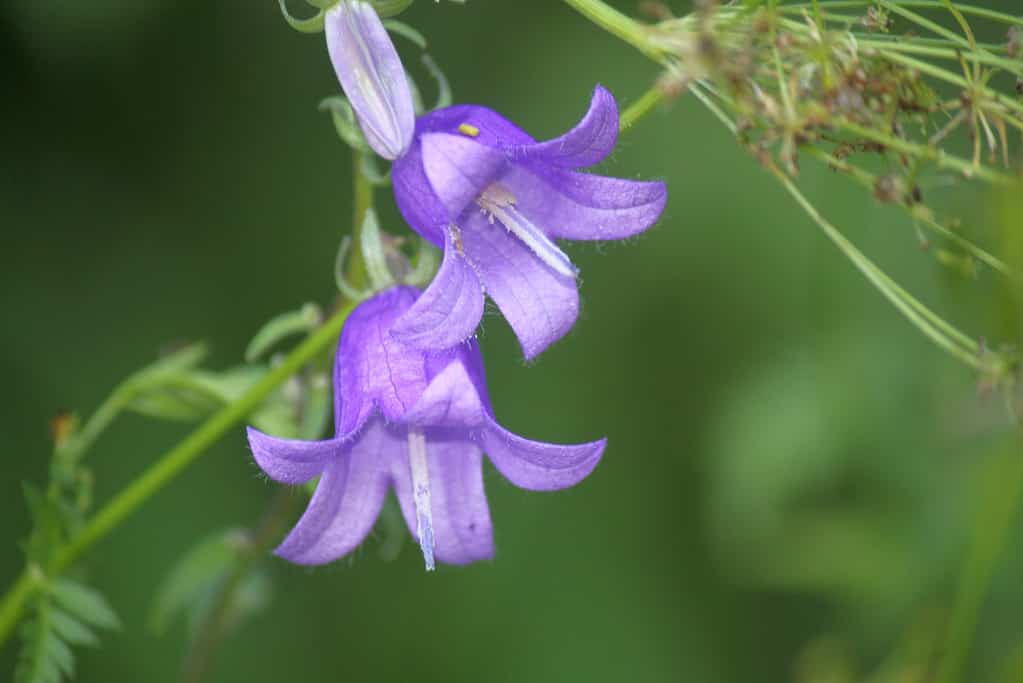
The Serbian bellflower is a set-it-and-forget-it type of flower.
©iStock.com/Mirojak75
The Serbian bellflower is one of the most colorful flowers you’ll see, and they absolutely elevate any garden. This brightly colored flower grows 4-6 inches tall, and it thrives in full sun or part shade with well-drained soils. Bellflower is incredibly easy to grow. Additionally, it’s virtually pest and disease-free. It’s a low-care perennial, so you can plant it and simply let it do its thing. As the name suggests, the Serbian bellflower is native to places in the Serbia region, including Bosnia, Croatia, and Herzegovina.
7. Shooting Star Flower (Dodecatheon meadia)
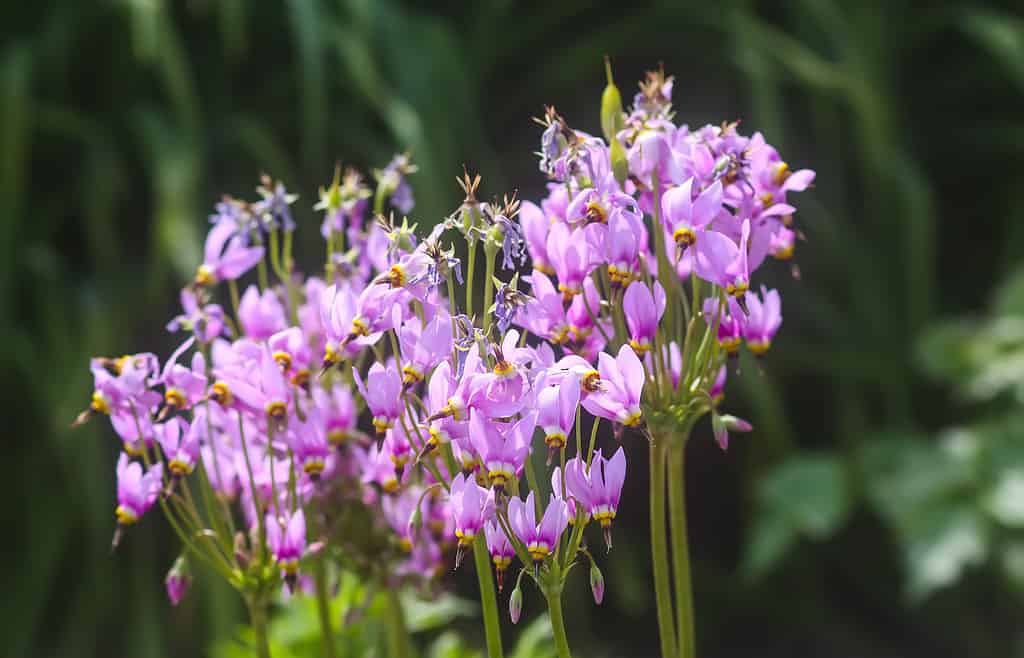
The shooting star flower can grow up to 12 inches tall.
©iStock.com/Olga Strogonova
With a name like the shooting star flower, how can this Pride of Ohio not appear on the list of the most gorgeous flowers that start with S? This vivid purple flower grows 9-12 inches tall. The flower does very well when planted in well-drained soil that is partly shaded. It looks great in your backyard or in rock gardens and woodland gardens. The flower is generally disease-free, so it can live and thrive effortlessly. You can find the shooting star flower in Central and Eastern North America.
8. Showy Stonecrop (Sedum spectabile)

Sedum or stonecrop is the perfect plant on slopes and as a groundcover.
©iStock.com/jojoo64
The showy stonecrop is a vibrant flower with a great pop of color during the autumn months. Firstly, the flower is typically a bright red or violet, and it can grow up to 24 inches tall. It does very well in full sun and medium moisture, and it looks great in rock gardens, beds, and borders. Like many other versions of the stonecrop, they attract bees and butterflies, and they also provide edible seeds for birds. Finally, they are a very low maintenance flower that you can set and forget.
9. Shrub Rose (Rosa)
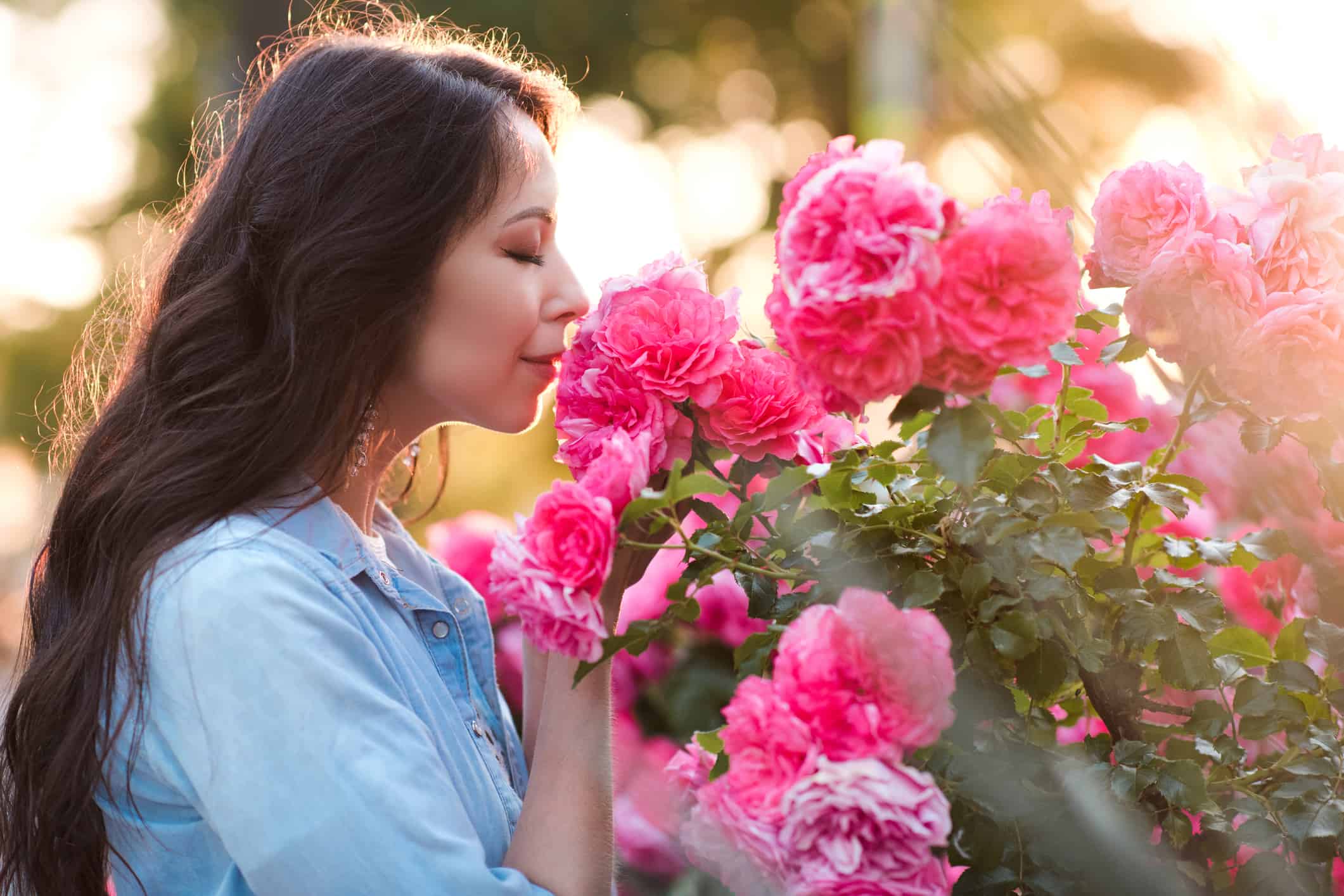
Shrub roses come in many gorgeous varieties.
©iStock.com/morrowlight
The shrub rose may take the cake as the most stunning of the gorgeous flowers that start with S. They’re undeniably luscious blooms require very little maintenance. They’re also incredibly resilient, so they’ll last forever and continue to make a great impression. Roses also come in a variety of colors, so options abound.
10. Siberian Iris (Iris sibirica)
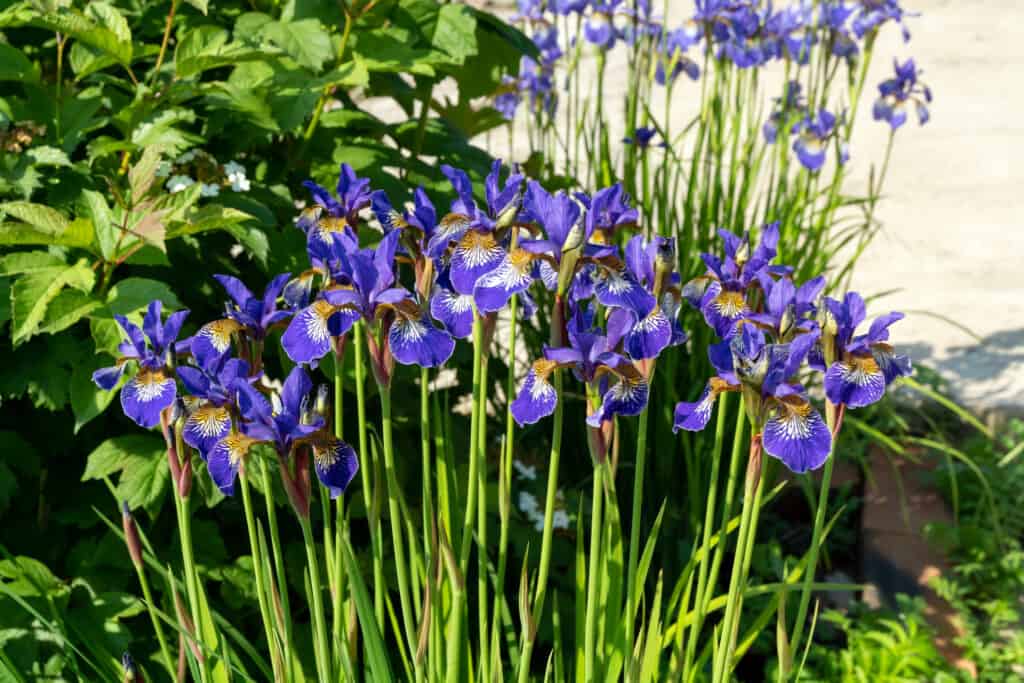
Blooming
Siberian
iris flowers do great in late spring and late summer.
©iStock.com/Svetlana Popova
The Siberian iris is a stunning flower that typically comes in shades of purple, blue, yellow, and red violet, while some newer breeds are brown and orange. They look great alone or as a large grouping, and you’ll see them all grow 2-4 feet tall. The flowers undeniably are at their best during late spring and late summer. They’re incredibly easy to grow, as long as you plant in part shade or full sun. As a bonus, they’re drought tolerant, so they’ll stay gorgeous even in dry climates.
11. Small Globe Thistle (Echinops ritro)
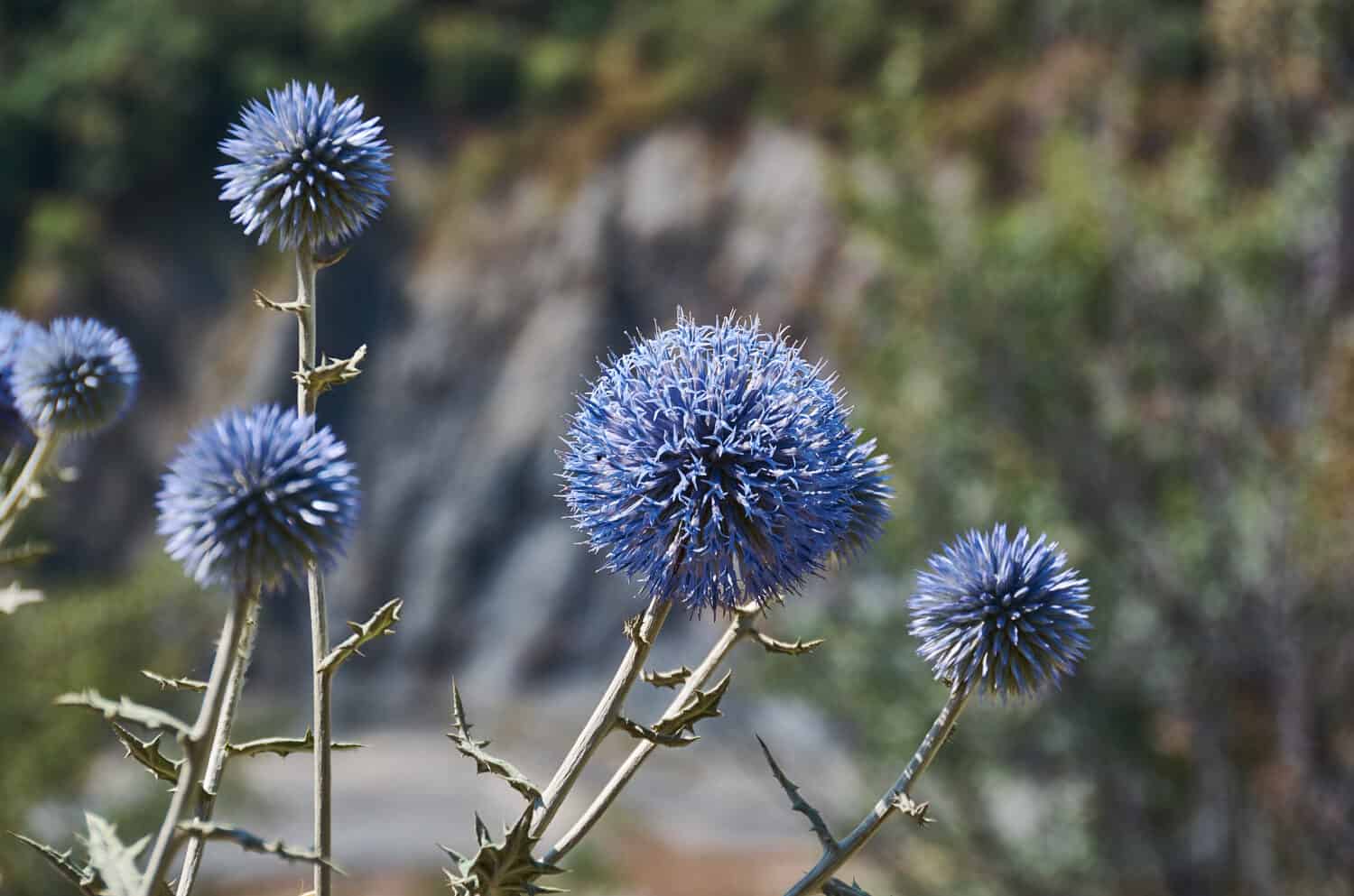
You’ll find the small globe thistle in the Mediterranean region.
©Chatham172/Shutterstock.com
The small globe thistle offers a very unique look. You can find this thistle in the Mediterranean region, and they work best in full sun and free-draining soil. They work great in coastal gardens and beds and borders, and you’ll often see them grow 2-3 feet tall. They’re resilient to diseases and pests, so they’ll stay tall and stately. Finally, the small globe thistle also adds a beautiful touch to dried floral arrangements.
12. Snow-In-Summer (Cerastium tomentosum)
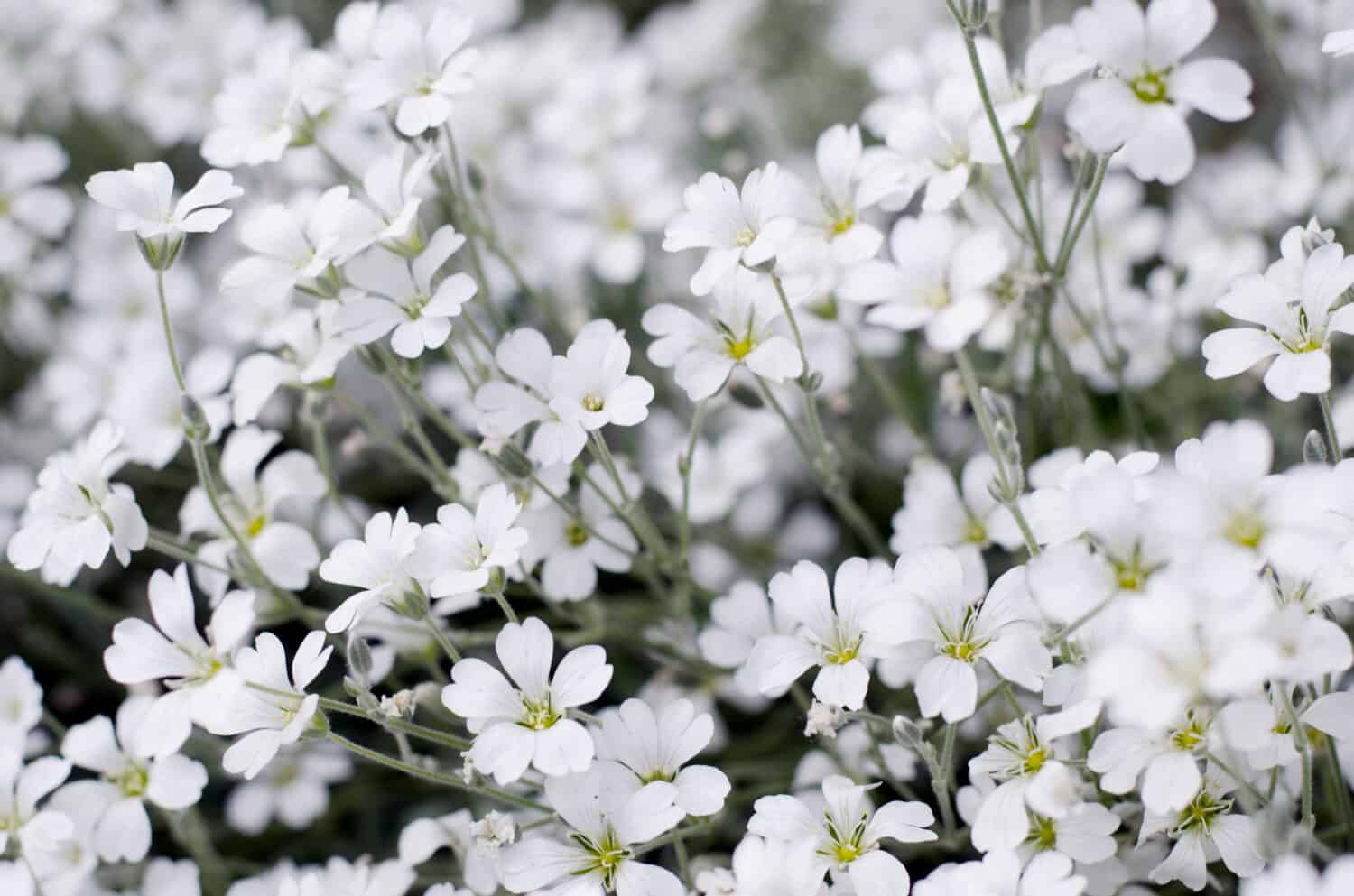
The
Cerastium tomentosumis a beautiful flower that litters the ground like new snow.
©high fliers/Shutterstock.com
Snow-in-summer is a perennial flower with a fun name. It tends to bloom during the early summer, and the perfect little buds create the look of fresh snowfall. The flowers do great in dry, sunny areas, and they’re deer resistant. You’ll often see the snow-in-summer flower on the coast of the U.S. near Maine.
13. Solitary Clematis (Clematis integrifolia)
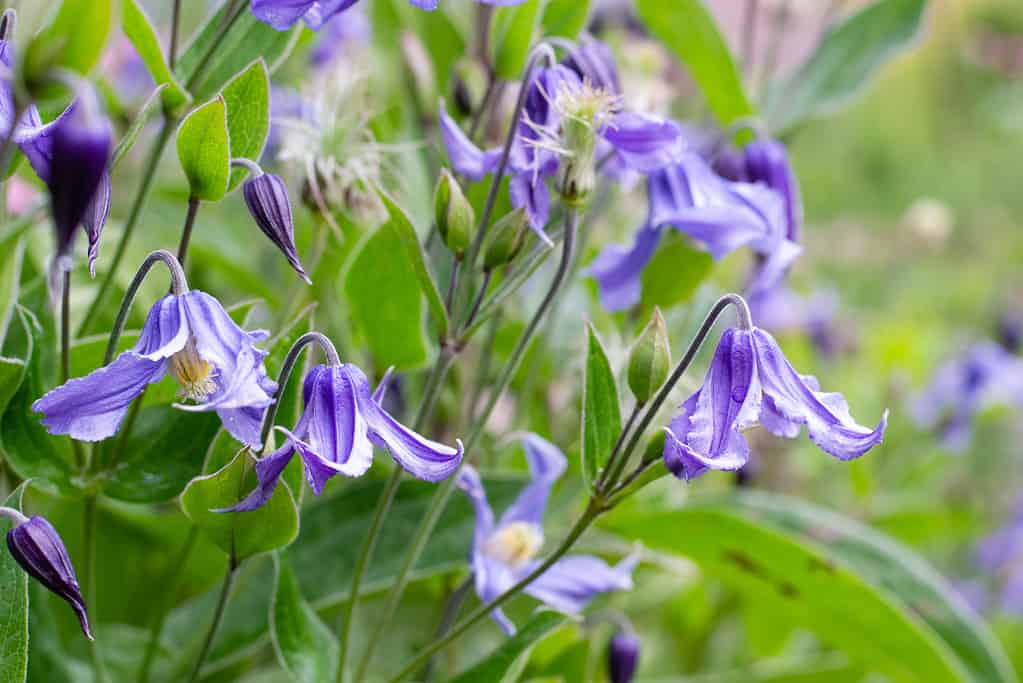
Also known as the small globe thistle, this is a unique flower that grows up to 3 feet tall.
©iStock.com/Albina Yalunina
Our next unique flower is the solitary clematis, a non-climbing, herbaceous flower that has a single bell-shaped bloom. It blooms throughout the summer, and it’s an undeniably great addition to any garden or yard. The flowers do well in well-drained soil, but they should still be watered regularly. At their most mature, they’ll typically grow to about 2-3 feet. Though this flower was first introduced in Britain, it has spread since then, and we’re glad it has!
14. Spring Vetch (Lathyrus vernus)
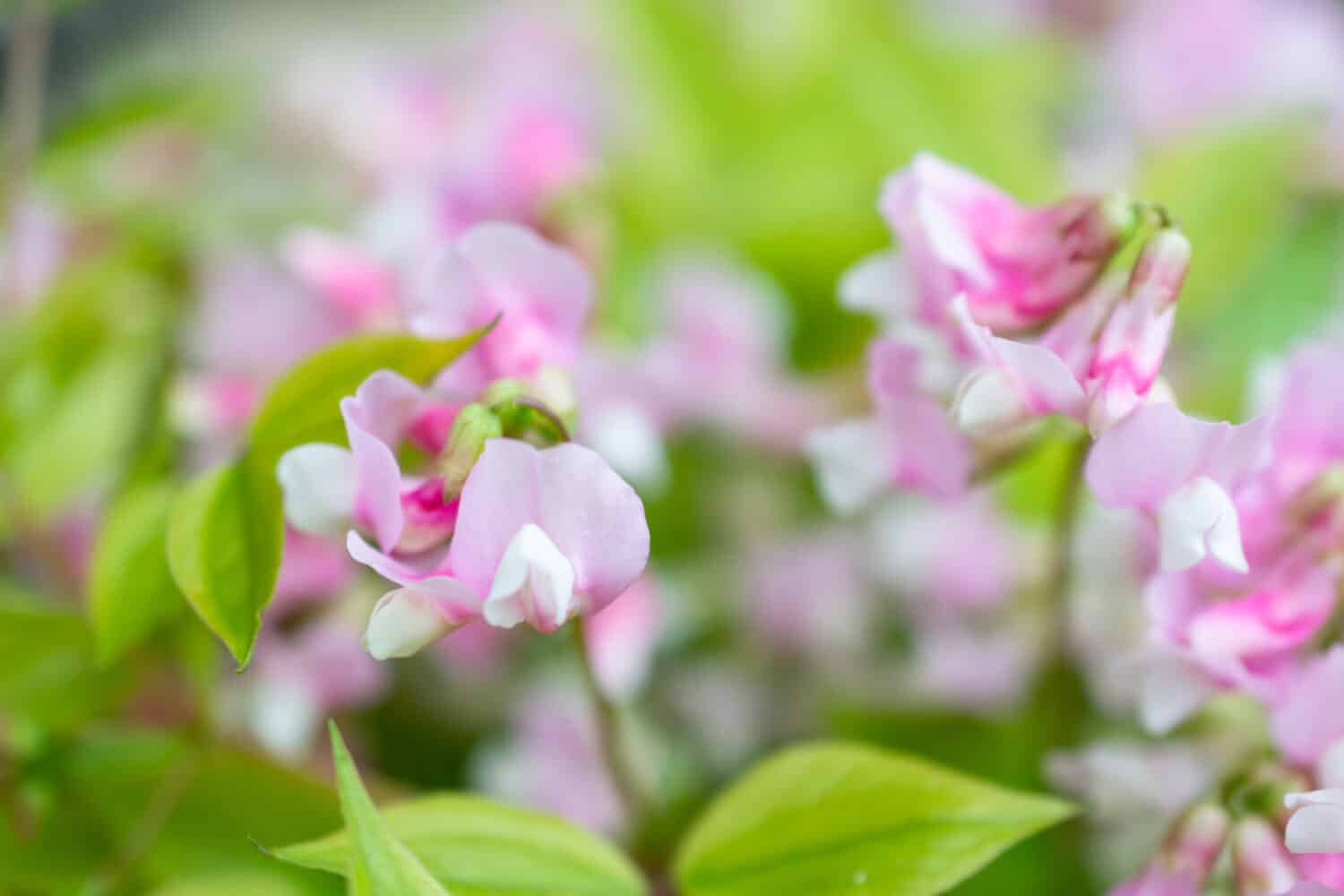
The spring vetch is native to Europe and Siberia.
©high fliers/Shutterstock.com
Next on our list, we have the uniquely named spring vetch. This wonderful feminine flower grows to about 18 inches in partial to full sunlight. It’s a great little perennial that prefers dry soil. It works great as an accent in your garden or in a container. The flower is native to the forests of Siberia and Europe, and it flowers in the spring.
15. Stokes Aster (Stokesia laevis)
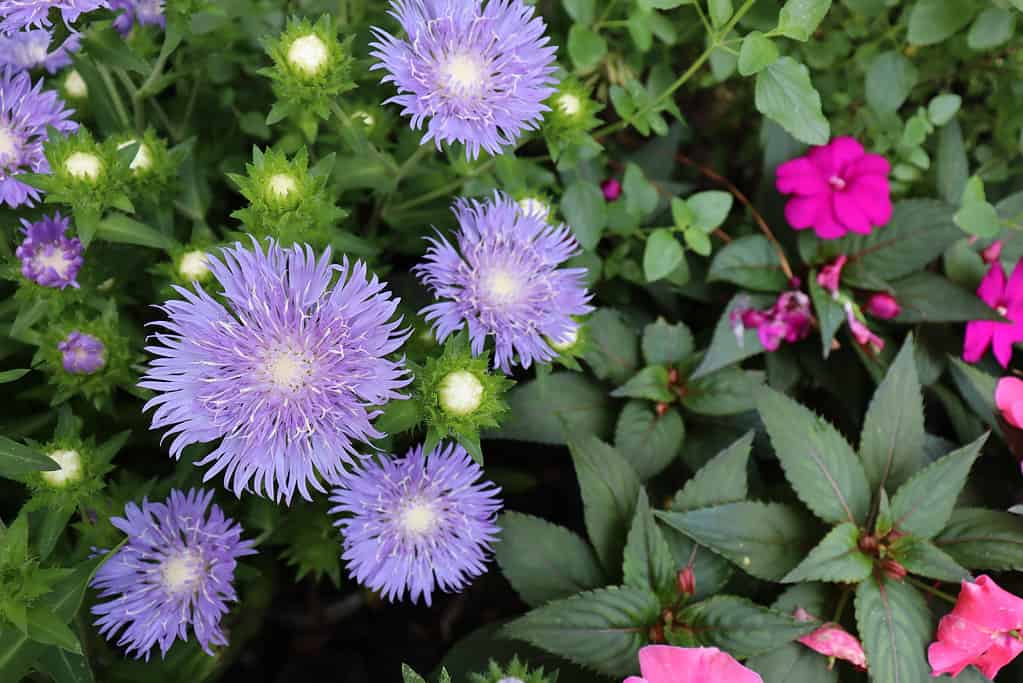
The stokes aster is native in the southeastern United States.
©iStock.com/Wirestock
If you love whimsical flowers, then check out the stokes aster. This amazingly gorgeous plant is a compact perennial that blooms in late spring and goes strong until fall. It typically grows up to 12-14 inches high. It likes well-drained soil and thrives in full sunlight, but it also does well in light shade. Best of all, the flower is resistant to most pests, including rabbits. Finally, it’s native to the Southeastern United States, but you can plant it in a garden near you.
16. Strawberry Foxglove (Digitalis × mertonensis)
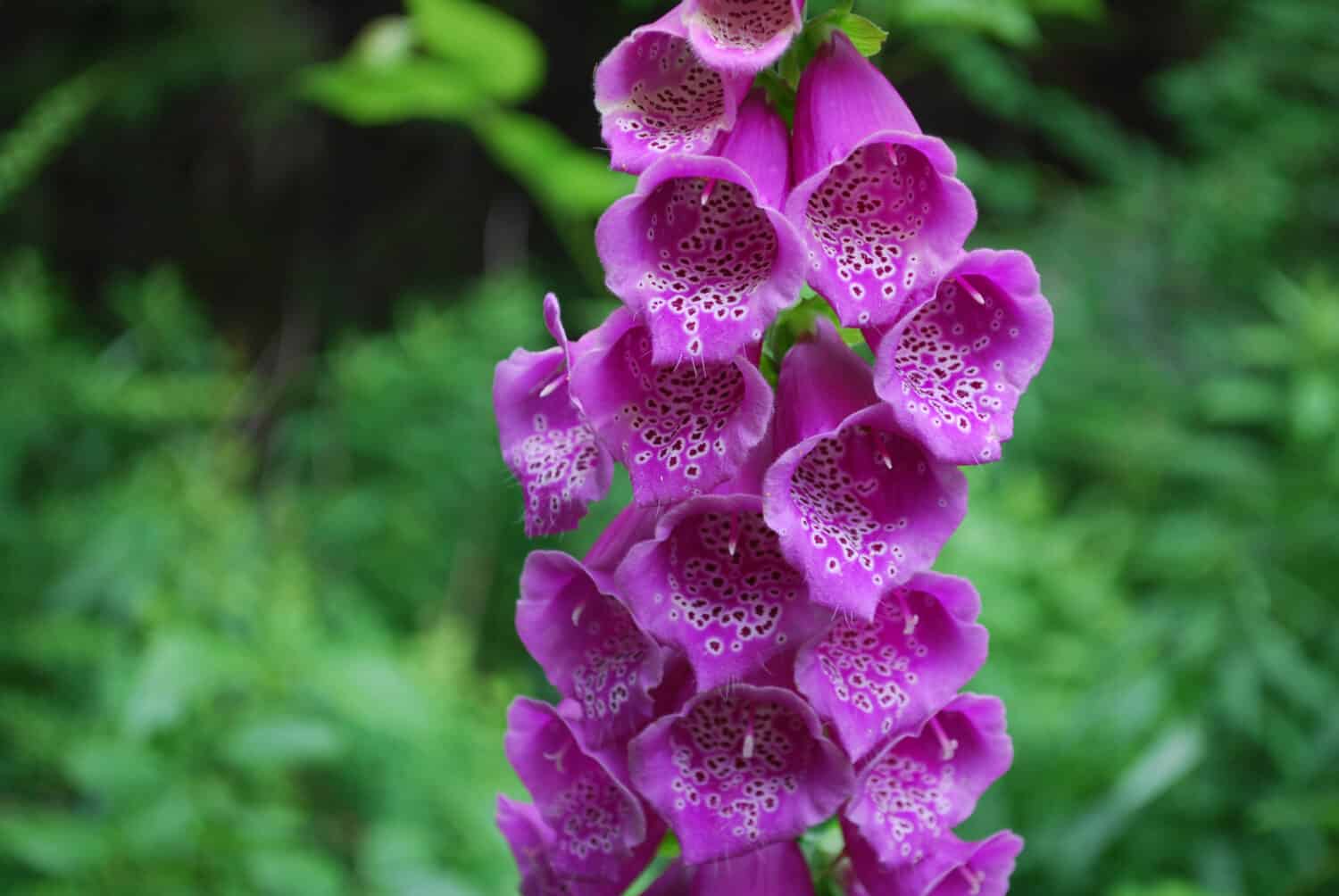
The strawberry foxglove looks like a gathering or gorgeous bells.
©Nature’s Charm/Shutterstock.com
The strawberry foxglove is undoubtedly one of the most unique flowers that start with S, forming a violet cluster of bell-shaped blooms. It can grace your garden during the late spring, early summer, and throughout the fall. It grows 2-3 feet tall, and much of that height is made up of the drooping flowers. It’s also easy to grow, which makes it great for cottage or city gardens. Beware that the flower is toxic to cats, dogs, horses, and humans, so keep it away from animals and wash your hands after handling.
17. Sweet Goldenrod (Solidago odora)
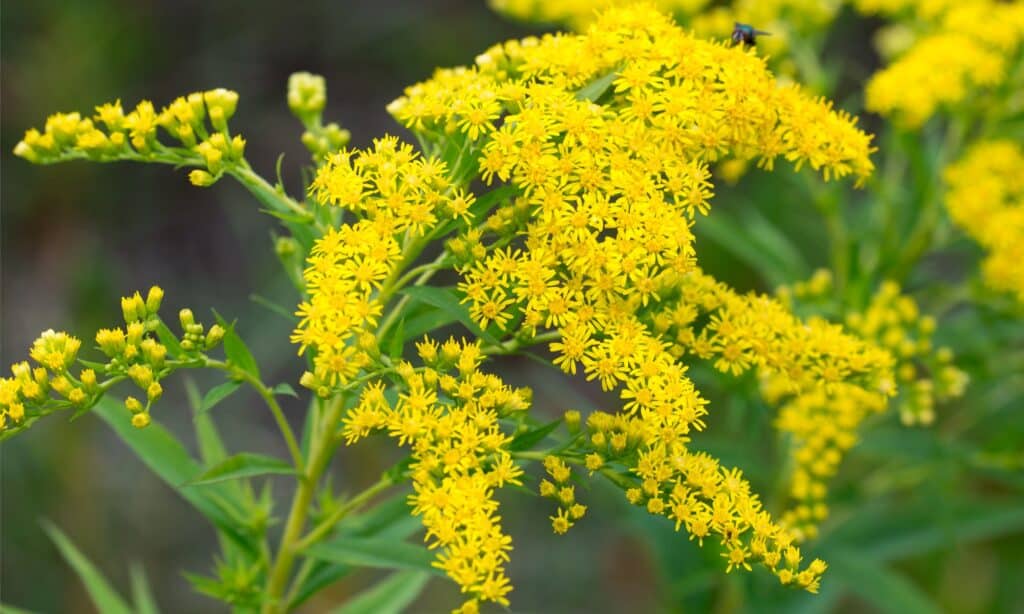
Goldenrod is a wildflower that’s often mistaken for ragweed.
©iStock.com/aga7ta
Next, we have the sweet goldenrod, a wildflower that adds a splash of color. The plant grows 2-4 feet tall when grown in full sun with well-drained soils. Once established, it is drought resistant. It is also deer resistant, and attracts bees, birds, and butterflies. It’s native to North America.
18. Sweetscented Bedstraw (Galium odoratum)
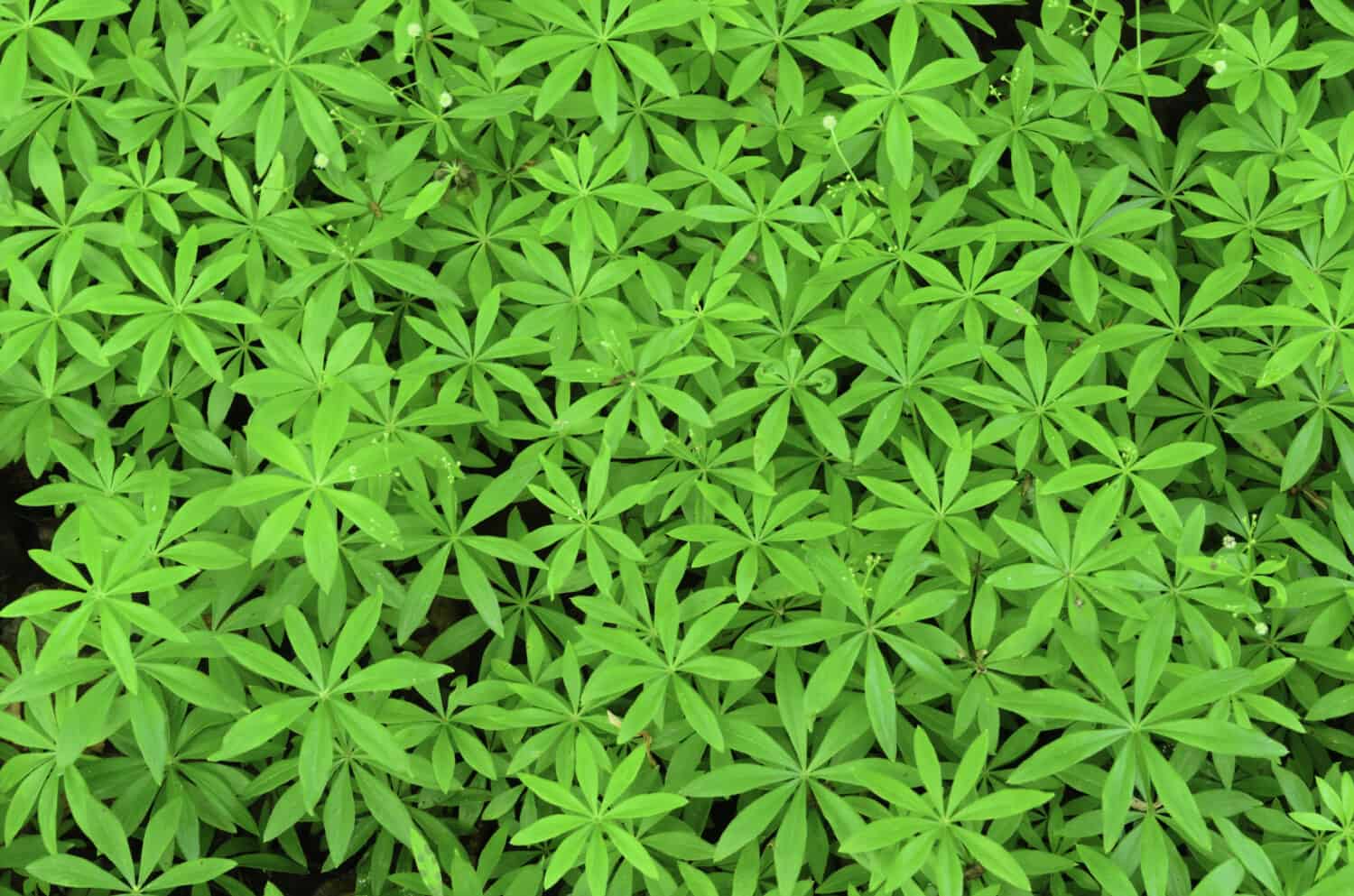
Sweet scented bedstraw smells so great that’s it’s often used in potporri.
©ESB Basic/Shutterstock.com
The unique sweetly scented bedstraw is a pretty flower native to North Africa and Europe. As the name suggests, the plant produces six to eight very fragrant leaves that many say smell like new-mown hay. In fact, the flowers are often used in potpourri. The simple leaves look elegant, spreading out evenly.
Conclusion
We could only cover a handful of the lovely flowers that start with S, so keep exploring! Many of these flowers can be planted in your own backyard, so you can enjoy them every day. If you want more ideas, check out the more extensive list of flowers that start with S below and enjoy your beautiful floral journey.
Summary of the Many Gorgeous Flowers That Start With S:
| Common Name | Scientific Name | |
|---|---|---|
| 1 | Sage | Salvia daghestanica |
| 2 | Sage | Salvia nemorosa |
| 3 | Saguaro | Carnegiea gigantea |
| 4 | Sand Dollar Cactus | Astrophytum asterias |
| 5 | Sand Phlox | Phlox bifida |
| 6 | Scarlet Buckeye | Aesculus Pavia |
| 7 | Scarlet Hedgehog Cactus | Echinocereus Coccineus |
| 8 | Scarlet Rose Mallow | Hibiscus coccineus |
| 9 | Scarlet Sage | Salvia splendens |
| 10 | Scarlet Strawberry | Fragaria virginiana |
| 11 | Scotts Clematis | Clematis scottii |
| 12 | Sea Holly | Eryngium planum |
| 13 | Sea Thrift | Armeria maritima |
| 14 | Serbian Bellflower | Campanula poscharskyana |
| 15 | Serbian Bellflower | Campanula poscharskyana |
| 16 | Shasta Daisy | Leucanthemum × Superbum |
| 17 | Shining Blue star | Amsonia illustris |
| 18 | Shooting Star Flower | Dodecatheon meadia |
| 19 | Showy Milkweed | Asclepias speciosa |
| 20 | Showy Stonecrop | Sedum spectabile |
| 21 | Shrub Rose | Rosa |
| 22 | Siberian Bugloss | Brunnera macrophylla– “Jack Frost” |
| 23 | Siberian Bugloss | Brunnera macrophylla– “Looking Glass” |
| 24 | Siberian Bugloss | Brunnera macrophylla |
| 25 | Siberian Iris | Iris Sibirica |
| 26 | Siberian larkspur | Delphinium grandiflorum |
| 27 | Siberian Peashrub | Caragana Arborescens |
| 28 | Silky Wormwood | Artemisia frigida |
| 29 | Silver Sage | Salvia argentea |
| 30 | Silver Spurflower | Plectranthus argentatus |
| 31 | Silver Torch | Cleistocactus hyalacanthus |
| 32 | Silver Torch Cactus | Cleistocactus strausii |
| 33 | Small Globe Thistle | Echinops ritro- “Veitch’s Blue” |
| 34 | Small Globe Thistle | Echinops ritro |
| 35 | Small-Flowered Anemone | Anemone parviflora |
| 36 | Smooth Phlox | Phlox glaberrima |
| 37 | Snapdragon | Antirrhinum majus |
| 38 | Sneezeweed | Achillea ptarmica |
| 39 | Sneezeweed | Helenium- “Helbro” |
| 40 | Sneezeweed | Helenium- “Moerheim Beauty” |
| 41 | Sneezeweed | Helenium “Zimbelstern” |
| 42 | Sneezeweed | Helenium- “Autumnale“ |
| 43 | Sneezeweed | Helenium- “Wyndley“ |
| 44 | Snow-In-Summer | Cerastium tomentosum |
| 45 | Snowball Cactus | Mammillaria Candida |
| 46 | Snowdrop windflower | Anemone sylvestris |
| 47 | Soapwort | Saponaria officinalis |
| 48 | Society Garlic | Tulbaghia violacea |
| 49 | Solanum | Solanum |
| 50 | Solitary Clematis | Clematis integrifolia |
| 51 | Solomon’s Seal | Polygonatum biflorum |
| 52 | Solomon’s Seal | Polygonatum odoratum |
| 53 | Sorrel | Oxalis articulata subsp. rubra |
| 54 | Sorrel | Rumex acetosa |
| 55 | Southern Blue Flag | Iris virginica |
| 56 | Species Iris | Iris spuria |
| 57 | Speedwell | Veronica peduncularis |
| 58 | Spider Flower | Cleome hassleriana |
| 59 | Spider Lily | Tradescantia pallida |
| 60 | Spider Lily | Tradescantia virginiana |
| 61 | Spiderwort | Tradescantia longipes |
| 62 | Spiked Speedwell | Veronica spicata |
| 63 | Spiny Lilac Flower Cactus | Acanthocalycium klimpelianum |
| 64 | Spotted Bellflower | Campanula punctata |
| 65 | Spotted Deadnettle | Lamium maculatum |
| 66 | Spring Vetch | Lathyrus vernus |
| 67 | Spurge | Euphorbia amygdaloides |
| 68 | Spurge | Euphorbia characias |
| 69 | Spurge | Euphorbia rigida |
| 70 | St. John’s Wort Plant | Hypericum |
| 71 | Star Plant | Astrophytum ornatum |
| 72 | Star Rock | Ariocarpus kotschoubeyanus |
| 73 | Stinking Hellebore | Helleborus foetidus |
| 7475 | Stinking Iris | Iris foetidissima |
| 76 | Stokes Aster | Stokesia laevis |
| 77 | Stonecrop | Sedum aizoon |
| 78 | Stonecrop | Sedum makinoi |
| 79 | Stonecrop | Sedum |
| 80 | Strawberry Foxglove | Digitalis × mertonensis |
| 81 | Strawberry Hedgehog Cactus | Echinocereus Stramineus |
| 82 | Sumac Plant | Rhus |
| 83 | Sunflower | Helianthus Annuus |
| 84 | Sunflower | Helianthus divaricatus |
| 85 | Swamp Milkweed | Asclepias incarnata |
| 86 | Swan River Daisy | Brachycome iberidifolia |
| 87 | Sweet Alyssum | Lobularia maritima |
| 88 | Sweet Coneflower | Rudbeckia subtomentosa |
| 89 | Sweet Coneflower | Rudbeckia subtomentosa |
| 90 | Sweet Fennel | Foeniculum vulgare |
| 91 | Sweet Goldenrod | Solidago odora |
| 92 | Sweet Pepperbush | Clethra alnifolia |
| 93 | Sweet Pitcher Plant | Sarracenia rubra |
| 94 | Sweet William | Dianthus barbatus |
| 95 | Sweet William Silene | Silene armeria |
| 96 | Sweetscented bedstraw | Galium odoratum |
Summary of 18 Gorgeous Flowers That Start With S
| Common Name | Specific Name | |
|---|---|---|
| 1 | Sand Phlox | Phlox bifida |
| 2 | Scarlet Rose Mallow | Hibiscus coccineus |
| 3 | Scarlet Sage | Salvia splendens |
| 4 | Scotts Clematis | Clematis scottii |
| 5 | Sea Thrift | Armeria maritima |
| 6 | Serbian Bellflower | Campanula poscharskyana |
| 7 | Shooting Star Flower | Dodecatheon meadia |
| 8 | Showy Stonecrop | Sedum spectabile |
| 9 | Shrub Rose | Rosa |
| 10 | Siberian Iris | Iris sibirica |
| 11 | Small Globe Thistle | Echinops ritro |
| 12 | Snow-In-Summer | Cerastium tomentosum |
| 13 | Solitary Clematis | Clematis integrifolia |
| 14 | Spring Vetch | Lathyrus vernus |
| 15 | Stokes Aster | Stokesia laevis |
| 16 | Strawberry Goxglove | Digitalis × mertonensis |
| 17 | Sweet Goldenrod | Solidago odora |
| 18 | Sweetscented Bedstraw | Galium odoratum |
The photo featured at the top of this post is © iStock.com/igaguri_1
Thank you for reading! Have some feedback for us? Contact the AZ Animals editorial team.






